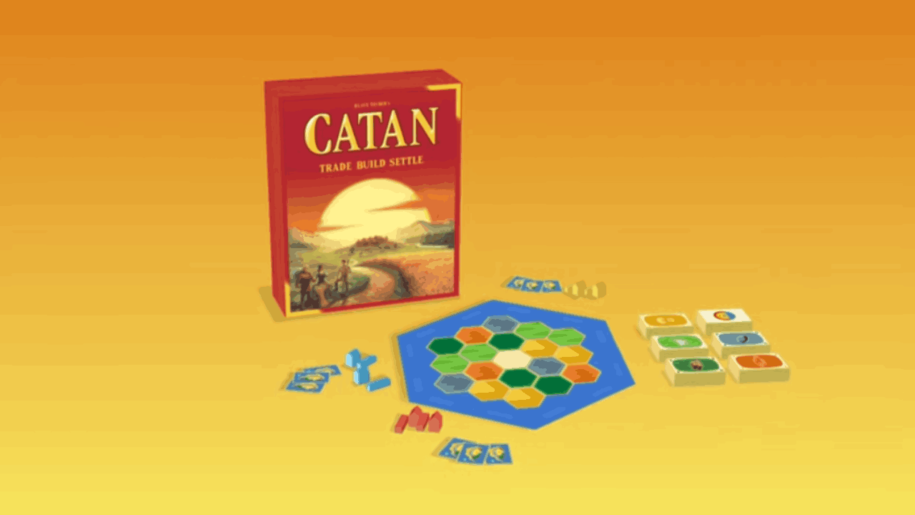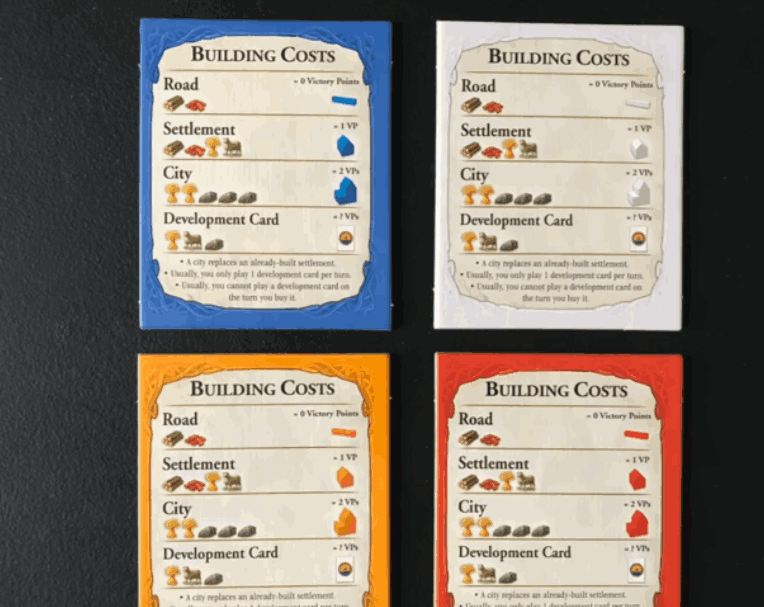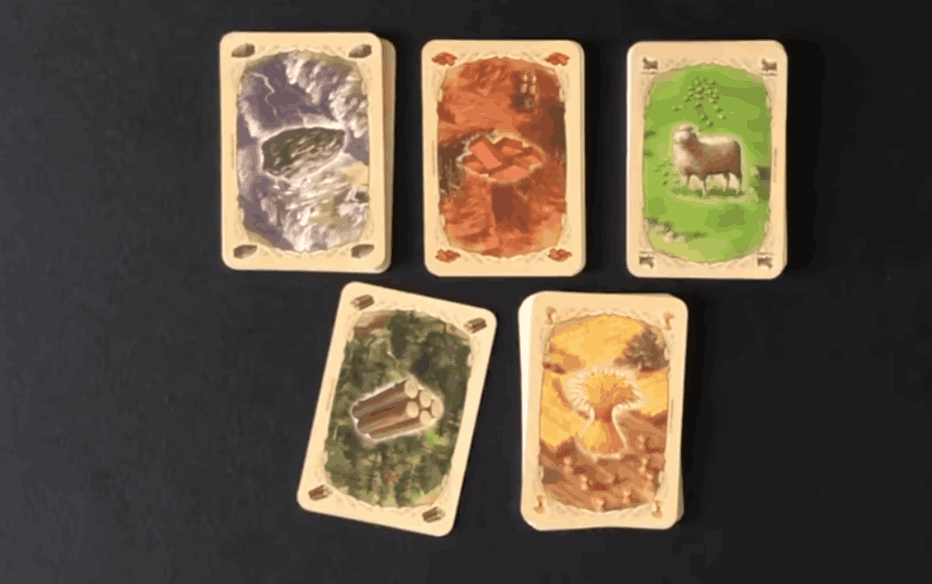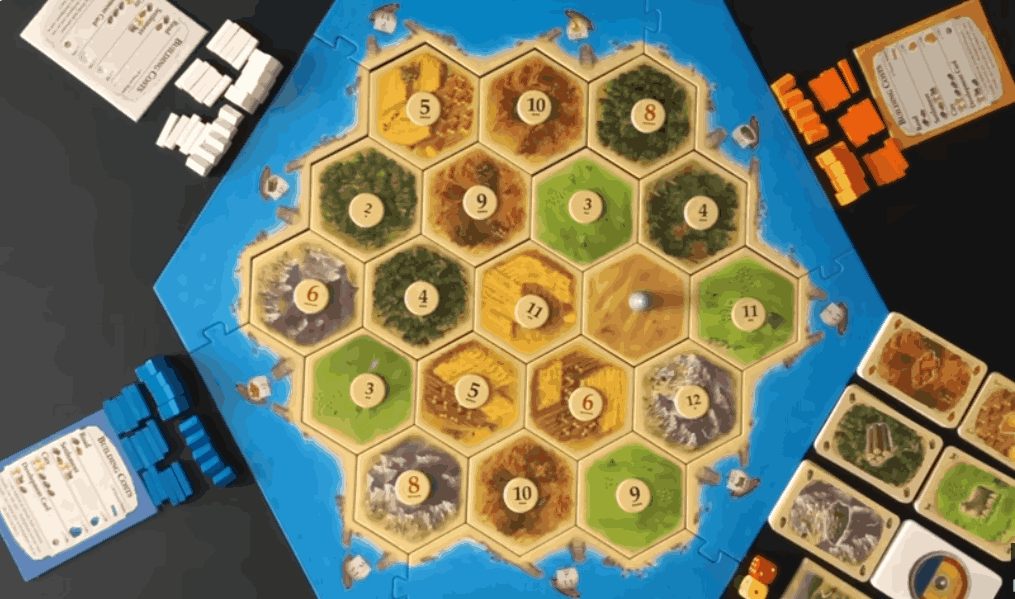
I consider moving to be the biggest inconvenience in the article every time. relocating, meeting the new neighbors, and packing up everything. I cringe at everything. But when I take a broader view, I realize that we have it easy in comparison to what others have gone through to relocate.
Consider what it would have been like for any group of people to decide to travel to and reside in a foreign land. The Settlers of Catan is an imitation of this concept. To become the most prosperous civilization on the island, players assume the role of settlers in a new location. Klaus Teuber created the multi-award winning, three-to-four-player dice rolling and hand management game, The Settlers of Catan. Best played with four players, The Settlers of Catan lasts approximately ninety minutes.
Games Overview

Catan is considered the father of the Euro game, a large gaming genre with limited player participation, point-based victory criteria, and a theme loosely related to the mechanics. All of these characterize Catan. 3-4 players build towns and cities on a random hex tile board to score 10 victory points.
Players play early island settlers who start with a few resources and can use them to colonize the island more widely, obtaining more resources and points. Players can trade to supplement their board income after a dice throw allocates resources each turn. Players can also use ports to trade two or three similar resources for a supply item.
Builders of towns and cities score the most victory points. These require resources but can be earned through feats like ‘longest road’ or point-scoring development cards. Purchase development cards from a face-down deck like settlements or cities. One card may offer you a point or allow you to benefit.
Overaccumulation is punished in the game. Any player that rolls a seven can steal a resource from another. Then all players with eight or more cards must discard half.
Settlement and route placement rules allow players to passively beat each other to different board spots. Overall, resource bargains and robber movements are the only interactions.
As noted, the game concludes when one player reaches 10 victory points and wins.
The Parts

Settlers of Catan is mostly a fancy box card game. Here are its parts:
- 120 cards
- One Production Die
- One Event Die
- One Knight Token.
- One Windmill Token
- One Rulebook
- One Box/Tray
Square, rounded-corner cards are rather thick. Due to clear back graphics, setup, development, expansion, and event cards are easy to distinguish. Event and expansion cards offer good, tiny graphics with descriptive text. I don’t like the setup and development cards’ rough 3D modeling. All cards employ iconography to simplify the game. Icons represent the six resources, victory points, commerce points, and knight statistics. Everything is intuitive and enhances gaming.
All Other Key Components are Well-Made Wood
A pair of dice. A simple six-sided “production” die is numbered “to”. Each face of the six-sided event die has a different color icon. Clear, intuitive icons again.
Both knight and windmill tokens are lovely. Each has a gold-stamped picture on a solid wood block and represents one bonus win point.
The 32-page black-and-white rulebook has a color cardboard cover. It’s fine, but the game’s complexity made it hard to follow. An “almanac” summarizing and explaining all the cards takes up half the book, which is useful.
The solid box has a tray for parts. The tray isn’t reliable. One card slot spills cards, which is unpleasant.
Settlers card game developers wanted to bring the board game’s high-quality design to this new medium. They succeed partially. However, the computer-generated graphics on some cards lowers my style score to “4” out of “5”. Still above average.
The Gameplay

Settlers of Catan has a complicated setup. I had to read it twice and struggled to place all the cards before understanding it. Return visits are better but still time-consuming.
Setup: Each player has 9 cards. Two settlements, one route, and six regions. Each settlement is a community connected by a road. Regions are positioned diagonally next to settlements (e.g., at the four corners). See nearby photo. Six Regions encircle two settlements and the road in the middle.
Note that each Region card generates grain, ore, wool, lumber, brick, or gold. Each Region has a die number from “1” to “6” that indicates resource production. Finally, the region card’s four sides are designated “0” to “3” so you may spin it to see how much of each type of resource exists in that Region.
The remaining cards are divided into 10(!) piles after each player builds his civilization. Development cards are categorized by route, city, settlement, and region. Event cards go in the fifth pile. The expansion deck is shuffled and split into 5 piles.
Finally, each player chooses 3 cards from one of the 5 expansion decks for his beginning hand.
You can start the game after all that setup:
- Dice Roll
- Act
- End Turn X. Actions Play
Roll Dice: This game has two dice: production and event. First comes death. It displays one of five icons.
Knight / Tournament: Players tally their knight’s tournament points; the winner chooses a resource.
The player with the Windmill token (more commerce) steals one resource from his opponent.
- Club / Brigand: Players with more than 7 ungarrisoned resources lose ore and wool.
- Sun / Year of Plenty: Players choose one resource.
- Event: Play the top card from the event deck.
As mentioned, the production die shows “1” to “6”. The player rotates the card to show he has one additional resource unless the region has reached the 3-resource maximum.
Actions: This is the game’s primary phase, and you can do several things. You can trade part of your resources for your opponent’s. Unfortunately, trade isn’t vital in this 2-player game. Trading is too close to a zero-sum game to be relevant. Trade to the bank for a 3:1 ratio (this is usually done with gold, which has no other use in the game).
Second, buy some basic cards “from the bank” and grow your empire:
- Road: 2 bricks, 1 wood
- Settlement: 1 wood, 1 wool, 1 brick, 1 grain
- City: 3 ore, 2 grain
You build roads to divide settlements. Settlements let you draw and place two new region cards, which produce resources, let you to put up to two green expansion cards, and are worth 1 Vicotry Point each. Cities are built from settlement upgrades. They’re worth 2 VPs and allow four green or red expansion cards (up from two green).
Note that settlement and city cards are restricted. There are 5 towns and 7 cities. This purposeful imbalance assures that players won’t have equal cities or settlements, allowing strategy.
You can finally grow your city. The bulk of expansion decks you’ve seen use green and red expansion cards. This deck also contains action cards, but we haven’t touched them. Most turns start with three expansion cards. You can play 2 green expansion cards on settlements and 4 green or red on cities. They fill the region card gaps above and below the city. As we’ve seen, expansion cards cost wool, bricks, grain, ore, and timber in varied amounts.
Red/city expansion cards are usually better than green/settlement ones. Resources make them more expensive to play. Most cards promote output in surrounding regions or improve resource trading ratios (e.g., 2:1). Numbers award win. Garrisons guard against brigands, and windmill-themed cards grant commerce points to determine who gets the Windmill token. Knights have two values: knight values, which determine Knight token ownership, and tournament points, which are utilized during the tournament event.
You refresh your Expansion deck to 3 at the conclusion of your round. You can draw from an expansion pile or spend two resources to choose. Exchanging cards is possible if you didn’t play.
- Play Actions: You can additionally play yellow action cards from the expansion deck during your turn. These can effect production, destroy opponents’ cards, protect yours, steal resources, affect trade, etc. Only 10 action cards exist.
Games are won when someone has 12 Victory Points. This happens by:
- One VP per settlement.
- Two VP per city.
- Windmill Token: 1 VP
- Knight Token: 1 VP
- Certain Expansions: 1+VP
Gaming Experience

I initially played Catan late one night in college. I doubt most people can recall their first game from a year ago, let alone eight. My case is different. That game reminds me of why I like board games. Catan was a unique gaming experience that I will always remember. Though intimidated at the outset of the game, I immediately decided on a plan. Though it failed, it didn’t matter. The experience was more important than winning since I was having fun. After talking about nostalgia, let’s discuss why the game works so well:
- Catan is one of the few games where I like all the mechanics. This game combines luck and strategy well. You can get to a high-probability resource location, but it may not be rolled until 10 turns.
- This amazing mix of these two features can be annoying, but it makes the game approachable to novice players and challenging for experienced.
- The replay value is considerable since the game can naturally swap resource placements on the map. In almost 50 Catan games since my first, we’ve never had the same configuration.
- Trading is my favorite part of the game. It’s not complicated or unique to The Settlers of Catan, but it’s executed well. A player may not need to trade for a whole game if the dice roll in their favor. Getting the resources you seek usually requires trading.
- I find the game most fun when people outbid one other, try to make deals for later, and bluff. I have many wonderful memories of players trying to influence others to exchange resources. Players have begged and groveled at someone’s feet to make a bargain. This player participation makes the game fun.
- One of The Settlers of Catan’s strengths. The game has great player involvement. This simplifies the game for beginners and engages experienced players.
- Most people trade and bargain naturally. Catan’s rules are easy to learn, yet the modular board forces expert players to create new strategies each time. Rarely does a board game attract both beginners and experts.
- Catan is one of the first eurogames I show newcomers. Its simple rules, low downtime, and great player engagement make it ideal for beginners. Catan has no player elimination mechanic, therefore it can keep players involved until the end.
Conclusion
Buy Catan immediately if you want to play with non-gamers. Get Catan if you like Euro games but have never played it. If you’re an expert gamer who rarely plays with beginners, you may want to skip this one.
Many games have expanded on Catan’s ideas. I think even veteran players should try it. Even only to experience the game that inspired so many great designs decades later.
